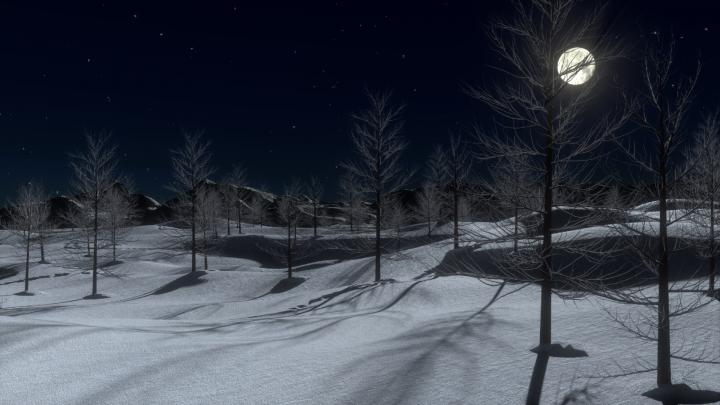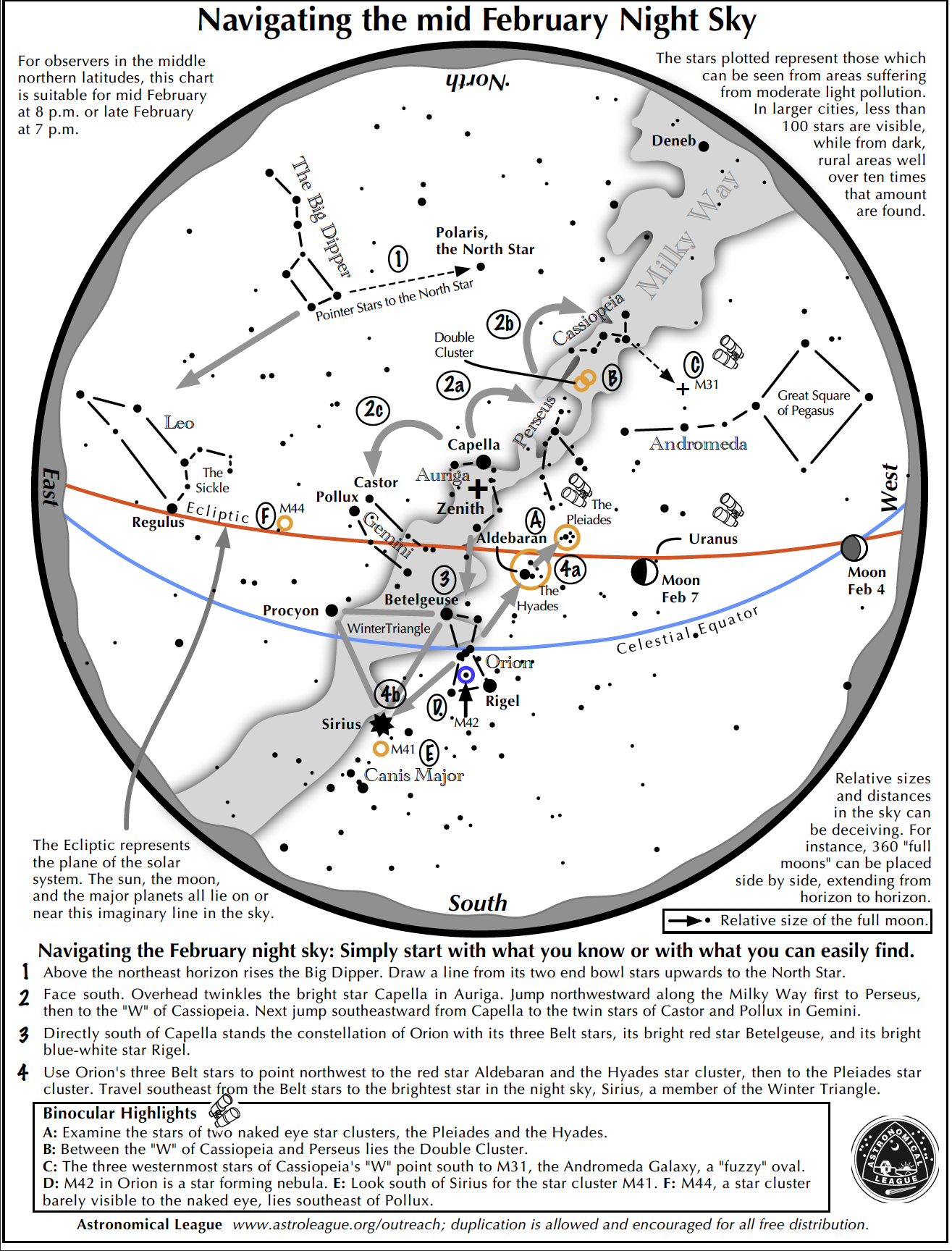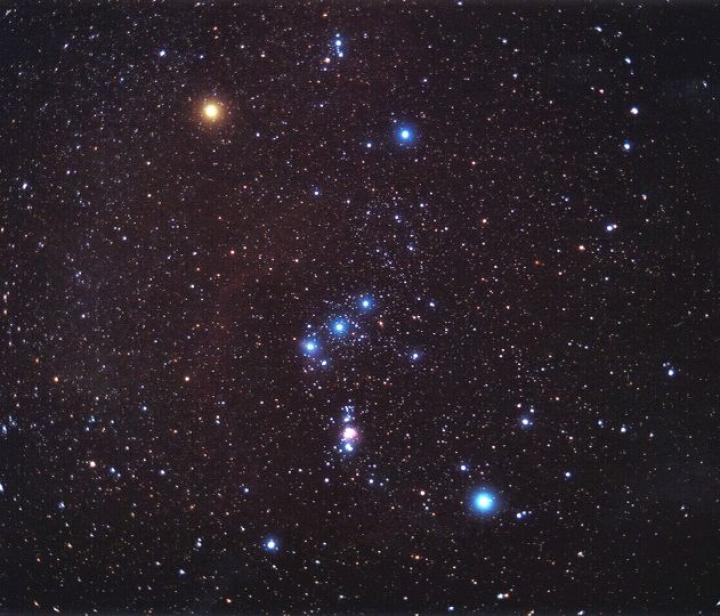We’ll help you navigate the February night sky! Bob Berman highlights the celestial events that you can easily see with the naked eye—from visible plants to bright stars. The month starts with a beautiful pairing of the very thin crescent Moon and Jupiter on February 2!
Advertisement
Jupiter and the Moon
In February, only Jupiter shines bright in the night sky. The other planets are now morning “stars.” Catch Jupiter while you can because it’s only visible until mid-February. Just look west after sunset near the horizon and you’ll see the bright planet! Soon, it will be too low on the horizon and hard to see in the sunset’s glare.
Probably the best celestial event this month is February 2—when Jupiter and the very young sliver of a Moon pair up for a beautiful sight with the naked eye!
- About 30 minutes after sunset, look in the southwest direction.
- Jupiter shines low on the horizon with the slender crescent Moon glowing to its lower left.
- The Moon is very thin because it’s only 1.7 days past new for East Coast viewers, and 1.9 days for West Coast viewers. See the Moon Phase Calendar for your location.
- If you’re using binoculars, the two celestial objects will be in the same field.
Venus, the Moon, and Mars
For the best morning event of the month, watch the crescent Moon pass Venus and Mars on the 27th of February.
- Above 60 minutes before sunrise, look in the southeast.
- Dazzling Venus will appear just to the upper left of the slender waning crescent Moon.
- Much dimmer Mars lies between them.
- The next morning (the 28th), an even thinner Moon floats just beneath Mercury, with Saturn to its left and the Venus–Mars duo to its right.
This planet bunching is very low and challenging but will soon get much easier to see. Venus’s supernal brilliance—at its brightest of the year during mid-month, a shadow-casting magnitude –4.9—grabs the attention of anyone gazing east before dawn.
See the Almanac’s Bright Planets Calculator to find out when planets rise and set. Just type in your zip code.

The Full Snow Moon
Here at the Almanac, we’ve long called February’s Moon the ”Snow Moon” due to the typically heavy snowfall that occurs in February. Other Native American names for this Moon are: Make Branches Fall Into Pieces Moon, Raccoon Moon, and Hunger Moon. Read more about the February Snow Moon here!

Orion the Hunter
See the sky map above, compliments of the Astronomical League.
The brighter constellation in the night sky is Orion, the Hunter of Greek mythology. Look first for that bright belt of three stars. The hunter’s shoulder is marked its bright red star Betelgeuse and its knee is marked by blue-white star Rigel. See our February Sky Map all about the constellation Orion.
 Follow the belt of Orion down and left to find blue-white Sirius, the brightest star in the night sky. Sirius lies in the constellation Canis Major, the Great Dog and companion to Orion. See my tips on finding Sirius, the brightest star of the February sky.
Follow the belt of Orion down and left to find blue-white Sirius, the brightest star in the night sky. Sirius lies in the constellation Canis Major, the Great Dog and companion to Orion. See my tips on finding Sirius, the brightest star of the February sky.
Use Orion’s three Belt stars to point northwest to the red star Aldebaran and the Hyades star cluster, then to the Pleiades star cluster.
Then travel southeast from the Belt stars to the brightest star in the night sky, Sirius. Above and left of Sirius is another bright star, a yellowish giant named Procyon. Procyon is part of the constellation Canis Minor, the smaller dog and Orion’s second companion. Procyon, Sirius, and Betelgeuse form a geometrical pattern called the Winter Triangle.
This is also a good time to view the Big Dipper far above the northeast horizon. It will climb upward during the evening hours to reach its high point for the night around midnight. Draw a line from its two end bowl stars upwards to the Polaris, the North Star. See my tips on finding the Big Dipper and the North Star.

Comments